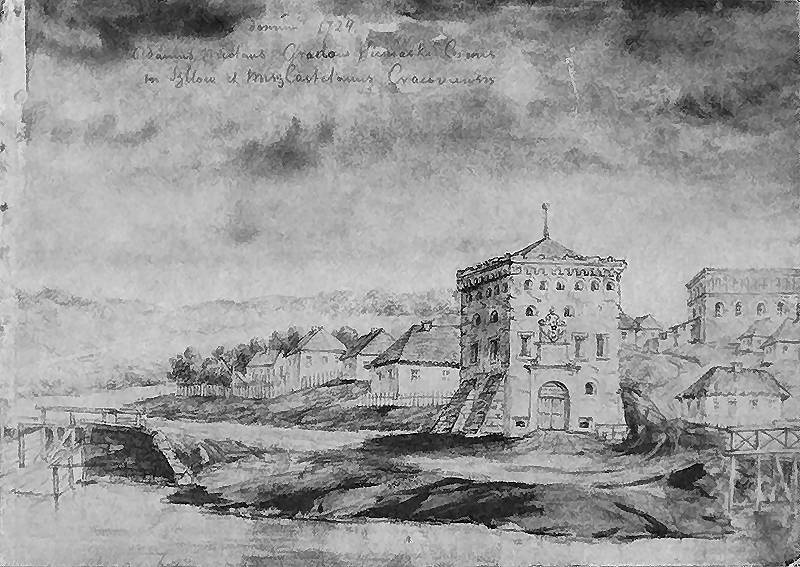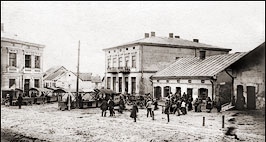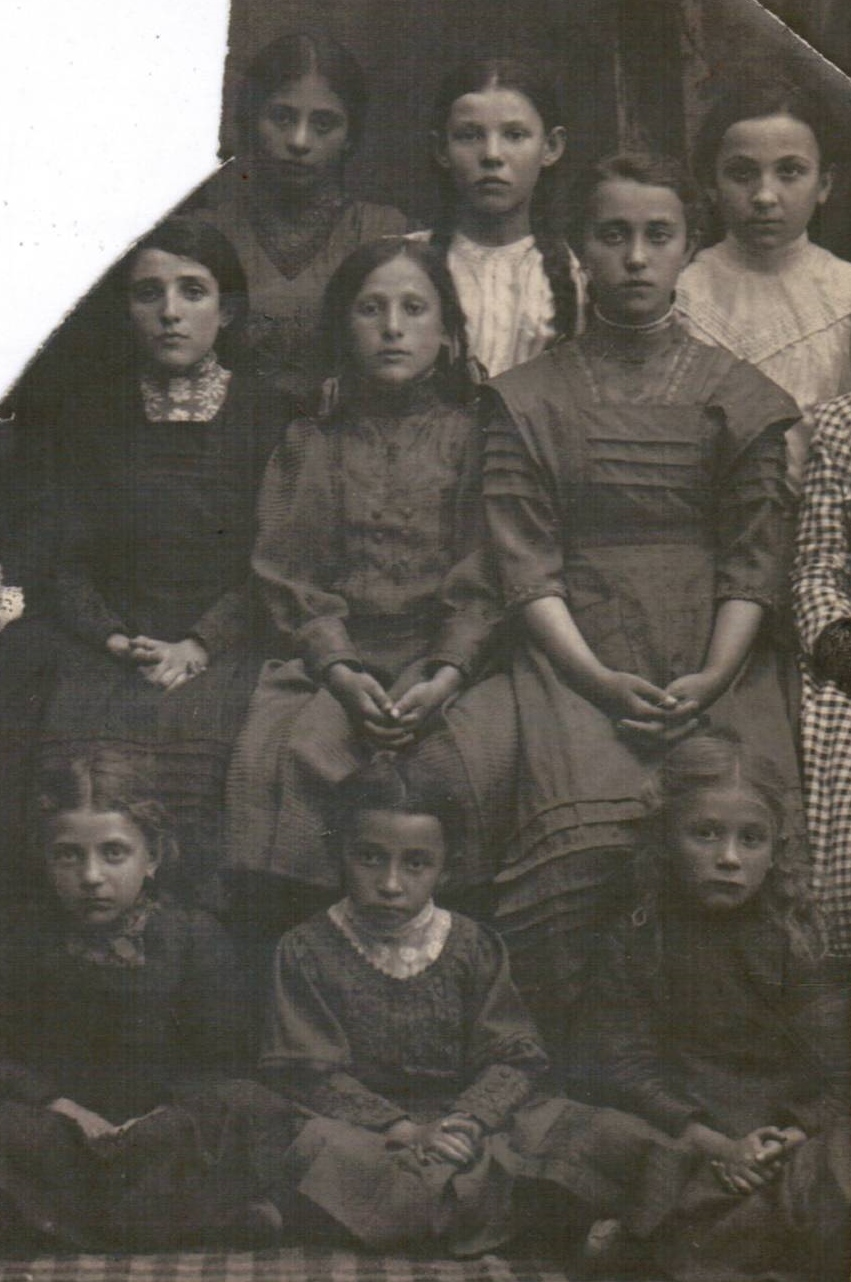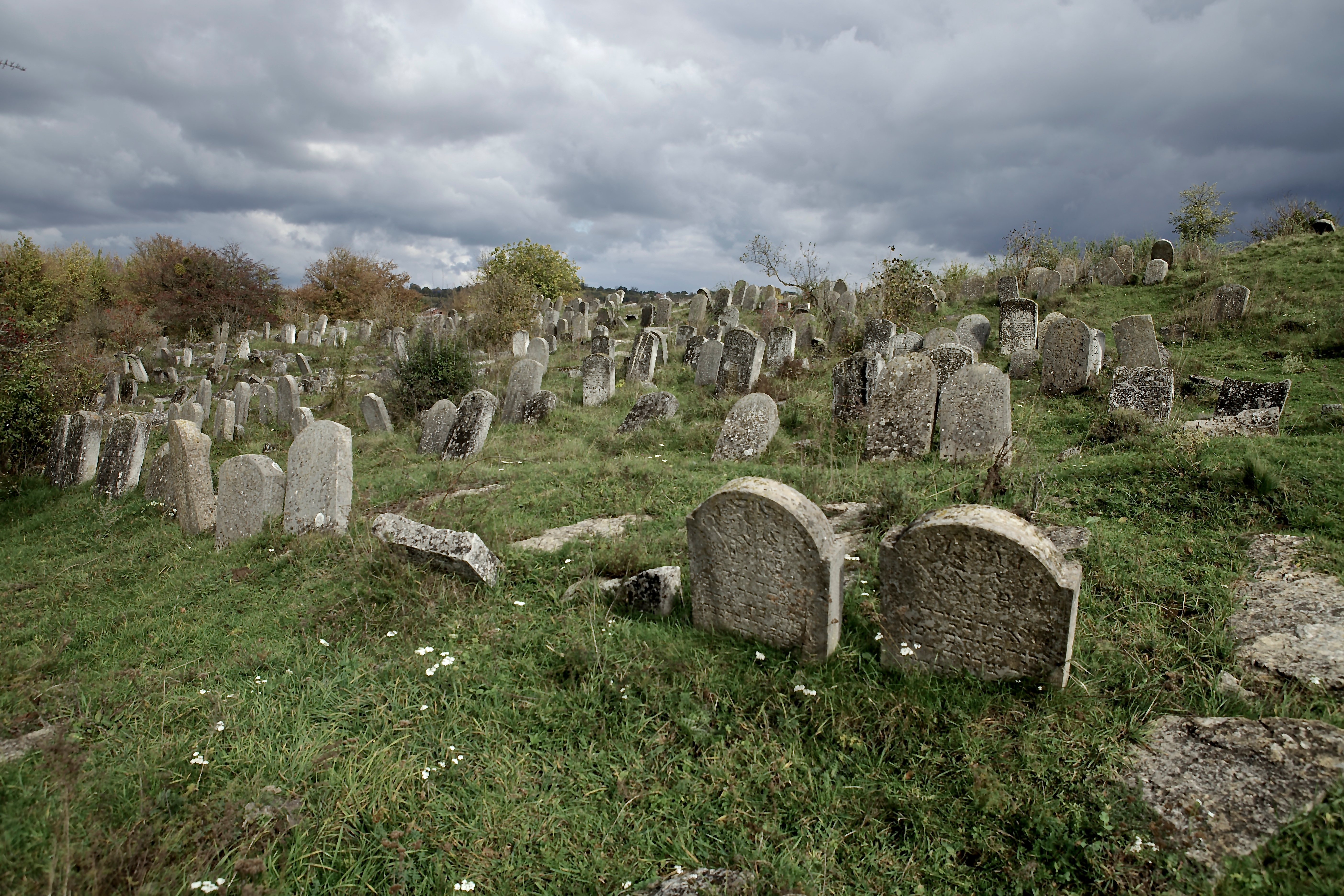 Sataniv, Ukraine
Sataniv, Ukraine Sataniv, Ukraine
Sataniv, Ukraine Satanov (Ukr.
Sataniv, Pol. Satanów) now is a village in Khmelnitsky region,
Ukraine. It was a town within Podolia until 1923 and belonged to
Poland before 1793. Satanov is located on the left bank of the
river Zbruch that separates Podolia from Galicia. Satanov was a
privately owned town belonging to the Polish magnates Sinyavsky,
and was handed down matrilineally through their family.
Satanov (Ukr.
Sataniv, Pol. Satanów) now is a village in Khmelnitsky region,
Ukraine. It was a town within Podolia until 1923 and belonged to
Poland before 1793. Satanov is located on the left bank of the
river Zbruch that separates Podolia from Galicia. Satanov was a
privately owned town belonging to the Polish magnates Sinyavsky,
and was handed down matrilineally through their family.
Satanov is one of the oldest
settlements in Podolia, its first historical mention in 1385.
Prior to ?
partition of Poland, Satanov was one of the border
settlements that constituted a fortified defensive line of
the Polish-Lithuanian state on its southern border.
It became a town in 1443,
and received Magdeburg Town Rights in 1444. Jews are recorded as having settled there in the 16th
century. In 1528-1531 the place was subjected to cruel and
ruinous attacks by Tartars—as a result, in 1565 Satanov had only
nine Jewish households. When restoration of the town began one
of the first stone buildings to be constructed was a synagogue.
(The earliest surviving Jewish cemetery tombstones date to
1576.)
From 1648-1649 the town suffered attacks by Cossacks. Ukrainian historian M. Grushevsky wrote that Jews marked the day of June 10, 1648, when rebels seized the town of Nemirov, as particularly sorrowful. Jewish records detail that about 6,000 synagogue parishioners were killed. Jews are known to have defended the towns of Nemirov, Bar, and Satanov. However, in 1651 Satanov was stormed by Cossacks who, lead by Danilo Nechay ravaged and burned the town.
At the time, the town’s large fortified
synagogue was an important hub of the fortifications of Satanov.
Some cannons have been located on its roof; even today you can
see rows of holes for cannons and muskets. If the enemy still
broke into the city, the synagogue served as the last stronghold
in which defenders could hide. In particular, the chronicles
mention that in 1676, when the Turks captured Satanov Jews hid
in this building.
After the town was liberated from the Turks in
1699, Sinyavsky began a restoration of the town. To the north of
Satanov, on a high hill, was rebuilt a stone castle with towers
at its five corners. High stone walls were built around the town
to protect its dwellers. Two big towers-gates were leading to
the town. The southern gate, known as Kamenetskaya, still
stands.
An origin of the name Satanov
Why Satanov is named that way? There are several versions, and according to them it is believed that the name was given to the city by either Romans, or Romanians, or Turkes, or Poles.
Near the city quite often still
could be found some ancient Roman coins. So, the Roman version
of the origin of the name has to do with Roman
solders allegedly asking their
commander : "Enough or not? Sat an non? "when they reached
the river Zbruch, and wondering whether to go further. Warriors
tired of a long hike, with loud cries, expressed a desire to
stop here, and so there was a settlement that grew into a
small town later.
Another
version says that the Wallachians, inhabitants of Wallachia, a region of today's Romania,
named the newly founded village "Satu Nou", which means New
Village.
There is also the Turkish version: they
say, the locals so obstinately resisted the Janissaries, that
Turks thought as if the Shaitan lived there. True, this version has a flaw: the city had its name
even when the Ottomans were not yet completely in these parts.
Probably the most
plausible version is connected with the word Satan,
because paganism lived in these places long after the
adaptation of Christianity by Poles. As people often see
evil where they do not accept dissimilar believes, some
historians have a theory that those who lived near such
settlements of pagans tried to vilify them, vindictively
calling their places Satanov and Chertkov. Czort (with cz
as ch) and Szatan (with sz as sh)
are Polish words for a devil and Satan. To enhance a
contrast, nearby villages were called correct
Orthodox names, such as Spasovka, and Bogoslovka derived
from such words as a saver and a theologian.
18th-20th Centuries
The reconstruction of the town’s synagogue was completed in 1754.
This date can still be read over the remains of the beautiful,
Baroque Aron-Kodesh.
of the town’s synagogue was completed in 1754.
This date can still be read over the remains of the beautiful,
Baroque Aron-Kodesh.
Jews resided in the town between the market and
the castle on Gorodetsky Street. Among the Jewish population
were land leasers (the most prosperous lawyer), merchants,
doctors, pharmacists, as well as craftsmen (tailors, furriers,
jewelers, bookbinders, and others).
At the end of the 1730s the town had approximately 5,000
inhabitants. In 1765, there were a 1,369 Jews recorded paying
poll tax in the town.
Starting in 1744, Satanov annually arranged
large four-week-long fairs that attracted traders from all over
Poland. In turn, Jewish merchants from Satanov regularly
appeared at big European fairs in Breslau, Leipzig, and
Frankfurt.
In the 18th century, the Satanov Jewish community was the leading
community of Podolia. It had one of the largest libraries in
Podolia, which held 754 books in 1776. Among the recorded
prominent leaders of the Jewish community is Rabbi Segal-Geller,
who represented the Podolsky District in the Vaad of Four Lands.
In the middle of the 18th century, the Jewish community of
Satanov actively fought against the movement of the later
excommunicated false messiah Jacob Frank. In 1756, the Satanov
dayyanim (religious judges) held a public trial of his
followers.
At the turn of the 19th century the community
was led by the famous rabbinical family Maragliot: Rabbi Sendra
(Alexander) Margalioth and his son Rabby Mordechai. By that time
Satanov also had a sizable Hasidic community. One of its first
(18th century) Tzaddikim, Rabbi Israel Gelerenter, was a student
of Beshta and author of the kabalistic essay "Tiferet Yisrael."
At the beginning of 19th century Rabi Chaim, grandson of the
famous Yechie l Michel of Zlocheva, became a leader of the
Hasidic community.
l Michel of Zlocheva, became a leader of the
Hasidic community.
Some of the outstanding representatives of the
early Jewish Enlightenment were born and lived in Satanov. Among
them are the philologist and writer Yitzhak Satanov (1732-1805)
and the philosopher and mathematician Menahem Mendel Levin
(1749-1826). He is widely regarded as the
"father of the Galician Haskalah." The poet David Vogel
(1891-1944) was born into a family of shopkeepers and lived in
Satanov until he was twenty-years-old. His poems were published
in Hebrew in Vienna, Paris, and Israel.
At the beginning of twentieth century, Satanov had an
approximate 3,000 Jews living there, which meant they comprised
two-thirds of the town’s total population. Most o f the town’s wealthy Jews lived in its center,
where the New Synagogue was built, while its smaller-time
artisans and merchants settled in the area called "Gelso
Mitzrayim" ("Egyptian street") in the valley behind the Great
Synagogue, next to the mikvah. In addition to the town’s large
synagogue were about a dozen additional houses of worship.
f the town’s wealthy Jews lived in its center,
where the New Synagogue was built, while its smaller-time
artisans and merchants settled in the area called "Gelso
Mitzrayim" ("Egyptian street") in the valley behind the Great
Synagogue, next to the mikvah. In addition to the town’s large
synagogue were about a dozen additional houses of worship.
In 1910-1915 Satanov had a functional Talmud
Torah, as well as a small school for girls. During WWI, Satanov
happened to be located in the center of European hostilities. Between 1918 and
1921, authority of the town changed hands between Germans,
Poles, Ukrainian nationalists, White Army, the Red Army, and
different Gangs.
In 1919-1920 a wave of pogroms swept Podolia. In June and December 1919, two Jewish pogroms occurred in Satanov. Jews were robbed of one million rubles, and contributions have been imposed on them. Killing of eleven Satanov Jews were documented. To defend the population during the pogroms, the town dwellers created a self-defense unit that included 25 Jews and five Christians.
In 1921, under the peace treaty between Russia
and Poland, Satanov became a part of the Soviet Union.
An immediate suppression of the community’s
long and vibrant religious life began, followed by the town’s impoverishment. Part of the town’s Jewish
youth left for big cities. Many Jews of Satanov who were engaged
in trade and handicrafts were unable to bear the tax burden.
Some of them were deprived of the property and rights. All of
them were doomed to half-starved existence of 20th-century
socialism.
Satanov as  a border town from the beginning was under the
close control of the Soviet government. After all Zbruch was
already in another state. Residents of Satanov and surrounding
villages were forbidden to leave the town without a special
pass.
a border town from the beginning was under the
close control of the Soviet government. After all Zbruch was
already in another state. Residents of Satanov and surrounding
villages were forbidden to leave the town without a special
pass.
Before World War II, Satanov had approximately
2,500 Jewish residents. On July 6, 1941 the German army entered
Satanov. During the town’s occupation, about 600 Jews were
killed. Many other Jews were taken outside the town and killed
there. After Satanov’s liberation, on March 25, 1944, only a few
dozen Jews returned home. In the 1980s, among the residents of
Satanov were only seven Jews. By the mid-1990s, there was only
one.
After more than 400 years of recorded history,
the Satanov Jewish community ceased to exist. All that remains
is an old Jewish cemetery, the ruins of the synagogue, and a few
old Jewish houses, nevertheless Satanovers’ descendants are
spread around the World.
Thanks to Dr. Morton Lang, and Klara Ronis for old
photos.
Copyright © 2021 Rufina Tetiyevsky